To start, a quick summary of the current toll of the Australian bush fires:
Hectares burned: over 6 million (more than the Amazon and California fires combined, and then doubled)
Deaths: 24
Buildings destroyed: 2,500+ (15 in the Snowy Mountains Region)
Wildlife killed: Half a billion
People Evacuated: 100,000+
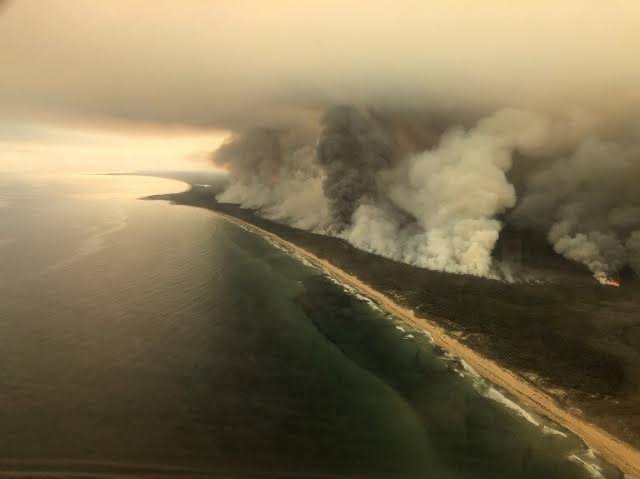
The East coast of Australia
This past week has been particularly catastrophic, with temperatures exceeding 40 degrees celsius (104 fahrenheit) and humidity below 10%. There has been no rain for several weeks. It also saw fires begin encroaching on Australian ski resorts in both Victoria and New South Wales (namely Thredbo, Perisher, Mt Buller, Mt Hotham and Falls). The Kosciusko National Park, in NSW, is under extreme threat, with the national park evacuated. This park also houses endangered species like Pygmy Possums, as well as millions of other animals. The nearby town of Jindabyne (where everyone involved with ski seasons in Perisher and Thredbo are lodged) was also evacuated.
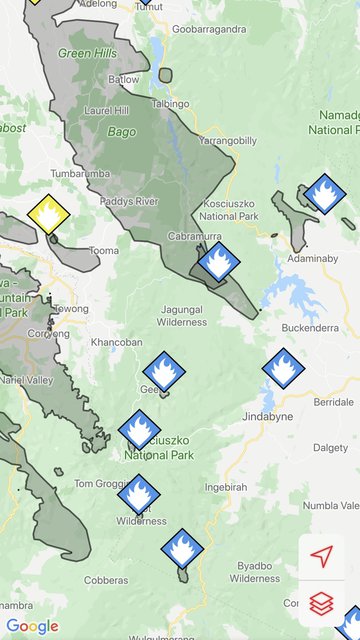
The area surrounding Jindabyne and the NSW resorts. Each flame symbol represents its own fire. The grey areas are already burned.
The current issue for the people of Australia is that there are far more fires than there are firefighters (of whom 70% are unpaid volunteers), which means if a fire hits your home/property, there is no one to call. Everyone is already fighting other fires. So the residents of Jindabyne have had to choose whether to stay and fight for their own properties (the main danger being falling embers starting grass fires) or to evacuate.
Sadly, Selwyn Snowfields (a small resort in the Kosciusko national park in NSW) has already been severely burned. A heritage-listed courthouse has been destroyed as well as two huts in the national park. The full damage is yet to be assessed.
I spoke to a gentleman who was volunteering his time to protect Perisher, NSW. As a current maintenance manager employed at Perisher and an ex-firefighter, Gary left his family to help protect the resort. He said the CEO and GM have both been up there, personally helping prepare the mountain. They have been aided by 8 local firies (Aussie lingo for firefighters), but no help from RFS (Rural Fire Service).
Perisher had a rotation of about 20 staff members willing to help, with many staying overnight to do tasks like roll out hoses, prepare snow guns, do perimeter checks and be vigilant for embers. With the resort completely surrounded by dense bushland, their safety plan is to retreat to the fire station at Perisher, around which they have dug a trench to block encroaching fire, a move which would essentially trap them until the fire is gone. Jindabyne, the nearest town, is roughly 30 mins drive away through the national park.
I also spoke to a young skier from Mt Hotham in Victoria, Xav, who has been helping defend his home mountain. He said that there was a deployment from CFA (Country Fire Authority) of five tankers and a command vehicle to help them defend the mountain. Australian resorts are all tricky to get to, in that they are accessed by single lane, winding roads up ascents through dense bush. And while the fires on these resorts don't threaten many lives or even many residences, they threaten millions generated for the economy and thousands of jobs during winter, which is why they illicit tactical responses.
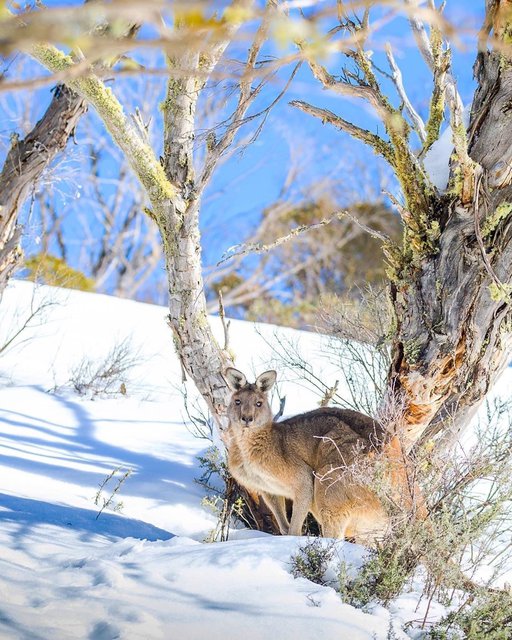
A Kosciusko local during winter. Photo: @boenferguson
Yesterday the threat eased off, as a southerly wind change occurred and temperatures dropped with some more humidity. The sad thing is this means the fire simply moved in a different direction to pose a threat elsewhere. To add to this, two electricity stations in the Snowy Mountains region in NSW have been destroyed which has resulted in a major power shortage for the state. Some heavily fire affected areas on the south coast in NSW have been without electricity or phone reception. In a cruel twist of fate, a water tank in Cooma (45 mins from Jindabyne) burst yesterday, losing one million litres of water, all during a terrible drought.
Instagram and Facebook are covered in posts and stories from people in the Snowy Mountains area of the bright red and orange skies, like something apocalyptic. At about 5:00 pm, ash began falling and the sky turned completely black, as if night time, despite the sun not setting until three hours later.
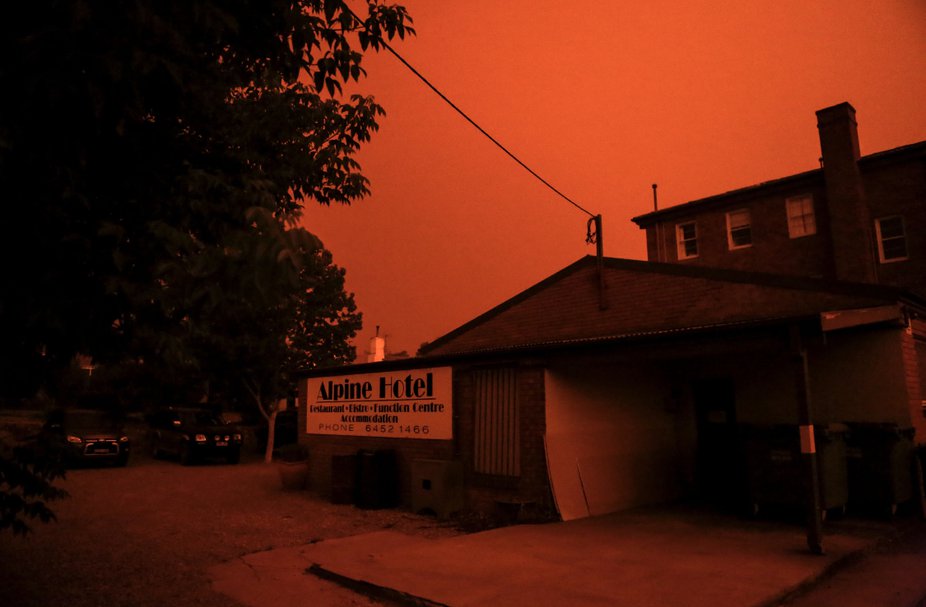
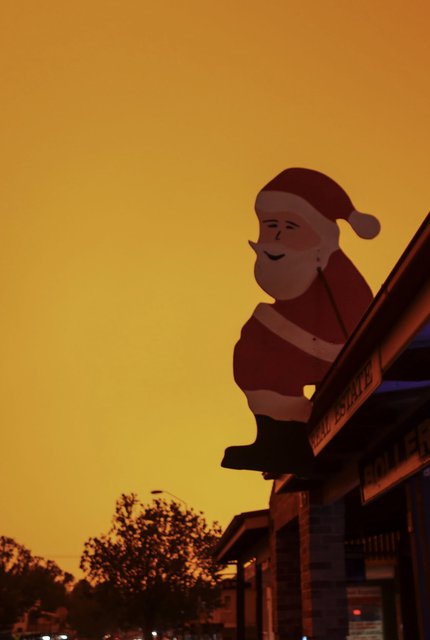
The sky in Cooma in the Monaro region about 4pm yesterday. No filter. Images: @skyechannel
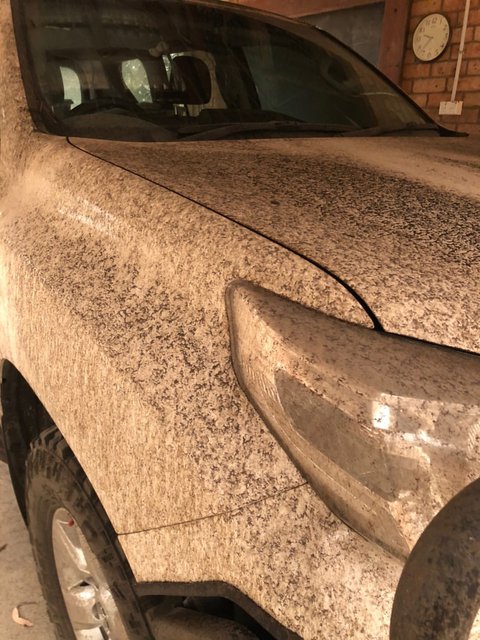
Residents woke this morning to find the whole town covered in ash. Image: @kalavenables
For now, it seems like the resorts that haven't already been affected have avoided the worst, but things can change so quickly. Even though the fires have been burning more than 100 days, fire season has really only just begun.
Anyone who wants to donate can do so to the following:
WIRES (in charge of all the injured animals): https://www.wires.org.au/donate/emergency-fund
OR
This great fundraiser started by an Aussie comedian that has reached more than $20 million (for the fire service):


Comments